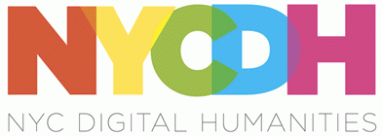Digital map makers are often interested in animating the spatial visualization over time or linking their maps to a timeline. This session provided participants with examples of animations and timelines using Neatline and GeoTemCo. The workshop also covered data formats and how time and mapping can be combined in Palladio, a free, web-based visualization platform designed for the humanities. All of the information provided to participants is available in a google doc.
We opened with examples of animated map visualizations. Two of particular interest are the Islamic Urban Centers project and the Atlas of Early Printing. While creating an animated visualization was not covered, these projects give a good idea for what the integration of time into our datasets can be used to do.
Abigail Sargent, MVST student, gave a brief presentation on the French of Italy NeatLine exhibit, a project that uses Omeka’s NeatLine plug-in to visualize the locations and dates of medieval French texts of Italian origin.
We then moved into talking about Palladio, and what each of the three main presenters are using it for. David Wrisley introduced participants to the idea of point-to-point data, of seeing the relationships of pieces to things in medieval texts. David Levine demonstrated some of the limitations of Palladio by pulling up a very large data set about medieval woodland and demonstrating how Palladio’s visualizations and network mapping can be useful. Alisa Beer drew on her research into medieval English libraries and demonstrated how Palladio can map points geographically as well as how the timeline function can be used.
We then broke into small groups and trouble-shot an intentionally broken data set, and then had participants create a .csv file based on Amtrak time tables from 1971, including the trip from New York to Boston.
Once participants had created a .csv file, we uploaded to Palladio and discussed the point-to-point map we had created!
Interested in learning more about Palladio?
Check out Miriam Posner’s tutorial to Palladio. Then open this google doc for participants, where you will find an intentionally broken data set to fix and upload into Palladio!



